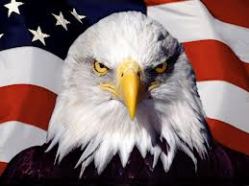
In the White Tiger, innumerable amounts of themes and issues are brought out, dealing with the very nature of India itself. One encounters incredible corruption, devastating poverty, suffocating oppression, and rampant injustice in this book. The ending of the book, though, centers on one topic, one topic that is central to the human experience and something that has been struggled for everywhere throughout history: Freedom.
Balram killed Ashok, a terrible sin that weighs on him even at the time he writes to the Chinese premier. He is not “a politician or a parliamentarian. Not one of those extraordinary men who can kill and move on, as in nothing had happened.” He is haunted by it. Yet, he is completely, 100% unrepentant, certain he made the right choice. Certainly he, a good man, must have gained something of incalculable importance to feel this way.
As a central theme to the ending of this book, I will say that “liberty is an absolute requirement for individuality and humanity, the only way a human can be a person”. To call it an absolute can sound strange, but it can be pretty simple to argue: if a person prefers to hear rock to classical music, but is not given the option to hear rock, that preference is irrelevant. Such an argument can extend to all of individuality, all of what makes a person unique and identifiable as a person. No wonder that people throughout history fought and died for it so unhesitantly.
It makes it seem almost obscene how we spit on that liberty today. Freedom of the press became the ability to gossip about the sex life of pop stars. People desperately trying to “fit in” where they can act how they can, having the beliefs their parents and people around them do… Facebook and its such CRUSHING individuality systematically. Conforming desperately to brands and clothes and everything to the people around us. Saying one is a “normal person” as a badge of pride.
India has a different culture. The poor are animals. Family is sovereign over everyone. The government buys and sells votes. Poor cannot enter malls. Poor cannot enter hotels. They live in quarters and speak subdued. People turn on any other person’s weakness, so you can have none. Freedom there isn’t a concept. People don’t understand it exists. The poor there have become used to the fact there is no freedom to be had. If someone was to understand what it is, they would fight to the death for it. It would be a divine gift unparalleled to any other.
It is what Balram obtained. When Balram obtained freedom by killing Ashok and his family, he became a person, with a personality, with quirks and beliefs. It turns out he is a bit of a philosopher. He likes chandeliers. They’re nice. He has skill in business, capable of multiplying the money he has with effort and foreseeing future trends. He is superstitious, avoiding cellphones. He doesn’t like pizza much. He enjoys nightlife.
He wasn’t any of this before he was free. Not really. Because it was utterly, completely irrelevant. He was an animal after all. Animals can’t do those things. His characteristics had no chance to surface, to the point they didn’t exist. That is what freedom meant for him.
Balram became a person by freedom. That is how freedom is crucial. Central to all importance in human existence.
I pray our culture remembers this, and be less decadent.

